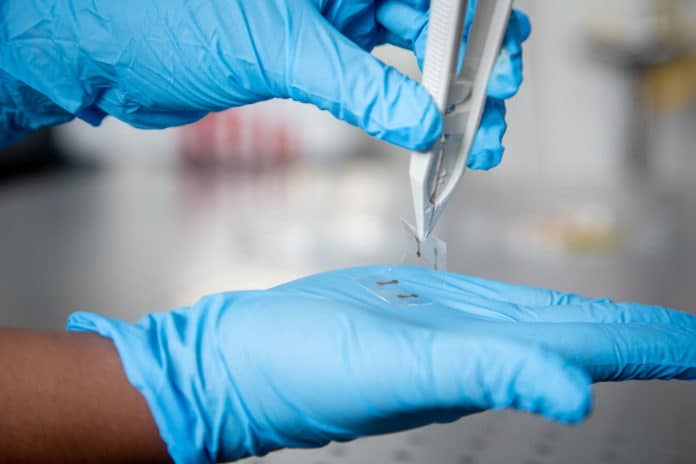Using a thin film- commonly found in cell phone touchscreens, scientists from the RMIT University have developed an ultra-thin and ultra-flexible touchscreen that is 100 times thinner than existing touchscreen materials. The technology is pliable enough that it can be rolled up like a tube.
Because of its incredible flexibility, the technology is readily compatible with existing electronic technologies. What’s more, it could be printed like a newspaper.
Lead researcher Dr. Torben Daeneke said, “most cell phone touchscreens were made of a transparent material, indium-tin-oxide, that was very conductive but also very brittle.”
“We’ve taken an old material and transformed it from the inside to create a new version that’s supremely thin and flexible.”
“You can bend it, you can twist it, and you could make it far more cheaply and efficiently that the slow and expensive way that we currently manufacture touchscreens.”
“Turning it, two-dimensional also make it more transparent, so it lets through more light.”
“This means a cell phone with a touchscreen made of our material would use less power, extending the battery life by roughly 10%.”
To create this new two-dimensional Indium Tin Oxide (ITO), scientists used a low-temperature liquid metal printing technique. The approach can directly deposit monolayer or bilayer ITO onto desired substrates, with the resulting bilayer samples offering transparency above 99.3%.
They primarily heated the ITO to 200C to convert it into liquid form and rolled over a surface to print off nano-thin sheets of indium tin oxide.
The resulting material has the same chemical make-up as standard ITO but a different crystal structure, giving them exciting new mechanical and optical properties. Besides extreme flexibility, the material can absorb just 0.7% of light.
Daeneke said, “It’s a pioneering approach that cracks a challenge that was considered unsolvable. There’s no other way of making this fully flexible, conductive, and transparent material aside from our new liquid metal method.”
The material is being used to create a working touchscreen as a proof-of-concept. Scientists even have applied for a patent for the technology.
The material could also be used in many other optoelectronic applications, such as LEDs and touch displays, as well as potentially in future solar cells and smart windows.
The study is published in the journal Nature Electronics.
